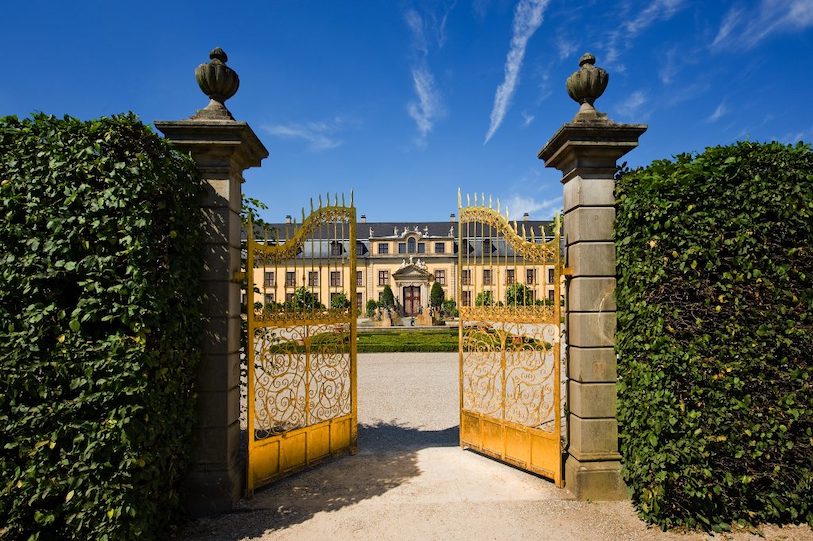
Herrenhausen Gardens - This name stands for one of the most impressive gardens in Germany. Within this area, the Great Garden stands out in particular: a carefully planned work of art that gives visitors an extraordinary sense of order, space and botanical aesthetics. Over an area of more than 50 hectares, a precise system of paths, hedges, water axes and geometrically laid out areas unfolds, setting standards for European garden culture.
Anyone walking through the Great Garden will immediately recognise the clear axial alignment. Paths run parallel or at right angles to each other. The strict organisation not only provides orientation, but also visual calm. The precisely trimmed hedges run through the garden space like living walls. This structure forms the basis for an experience that convinces not through surprise, but through consistency.
The centrepiece is the water parterre with its large fountain. This rises into the sky with a jet of water up to 80 metres high and acts as a focal point in the centre of the complex. Watercourses, fountains and pools are not just decorative elements, but an integral part of the overall picture - they connect visual axes, reflect light and structure the area in a lively way.
The Herrenhausen Gardens are not only a place of architectural discipline, but also of floral diversity. In spring, thousands of tulips, hyacinths and daffodils dominate the areas. In summer, colourful borders with marigolds, salvias and zinnias follow. This seasonal planting is carried out according to fixed planting plans, which are adapted annually but subordinated to the symmetry and design language of the garden.
Orangery trees - citrus plants housed in mobile tubs - can be found in various places. They refer to the historical importance of exotic plants in courtly gardens and give the garden a subtle Mediterranean flavour.
In addition to the flora, the Great Garden is also characterised by the integration of architectural elements. Sculptures, vases, fountain basins and buildings such as the orangery or the gallery are not accessories, but integral parts of the design concept. These elements emphasise the ideal of the garden as a total work of art, in which architecture, nature and human management form a harmonious whole.
The gardens were designed in the late 17th century. Originally intended as a place of representation for the Hanoverian royal family, the garden has been preserved for centuries. The basic structure remained largely untouched. Adaptations were only made where they served the long-term preservation or current utilisation.
This continuity makes the Great Garden a testimony to sustainable design. What once served as an expression of power and order is now an inspiration for a different way of dealing with nature: respectful, conscious and structured.
Herrenhausen Palace, once the summer residence of the Guelphs, was destroyed in the Second World War and rebuilt in 2013. Today it houses a museum that presents the history of the gardens and the Guelph dynasty. The magnificent ballroom of the gallery and the historic Heckentheater are evidence of the glamorous life at court.
Immerse yourself in the magnificent world of the Great Garden, one of the best-preserved Baroque gardens in Europe, and experience the fascination of over 300 years of history. Click here for the guided tours
+ Read more
Copyright © 2025 HANNOVER LIVING - All rights reserved.